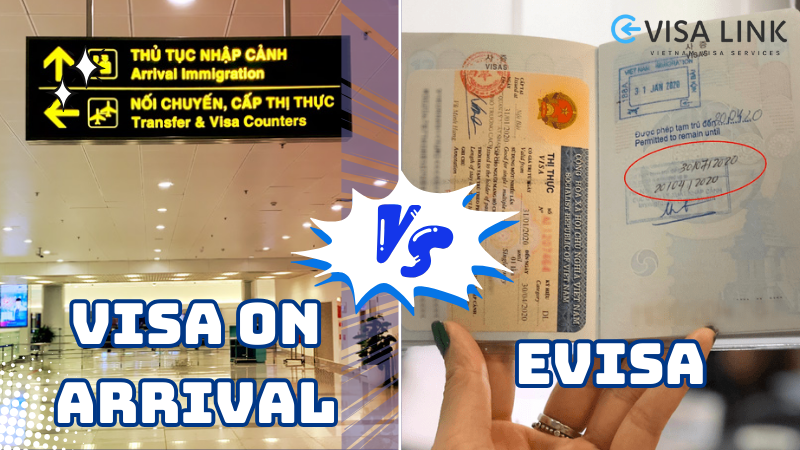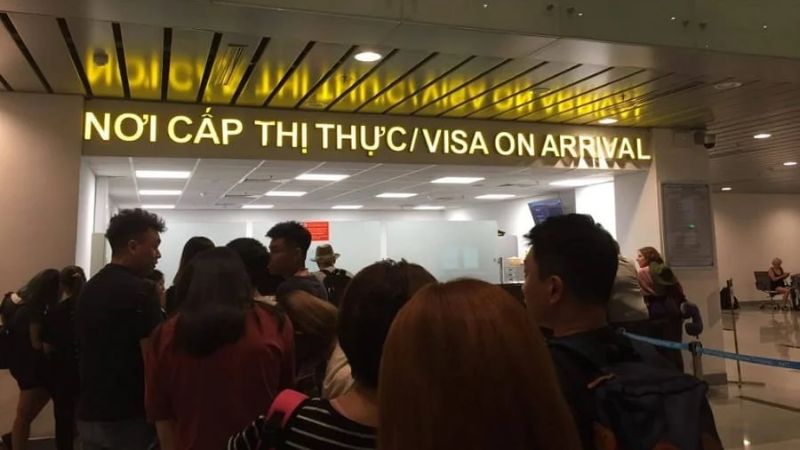Vietnam eVisa vs Visa on Arrival guide for travelers to Vietnam. When considering a trip abroad, visa considerations are pivotal. In the context of Vietnam, travelers have two primary avenues to secure a visa. They can either opt for the online process, which encompasses the Vietnam e-visa and the visa on arrival (VOA), or approach an Embassy. This guide elaborates on the differences, advantages, and potential challenges associated with each method, helping you make an informed choice.
Comparing Vietnam e-Visa and Visa on Arrival
The Vietnam Immigration Department issues both the e-visa and the visa on arrival, allowing you to enter the country legally. However, they have key differences:
- E-visas are for passport holders from 80 countries, while visas on arrival are for all travelers entering via airports.
- Entry Points: Visa on arrival holders can enter through 33 ports, including airports, land ports, and seaports. E-visa holders can enter through 8 specific international airports.
- Visa Duration and Type: With Visas on Arrival, you can choose from different durations like 1 month or 3 months. Additionally, US citizens have the unique option of a 1-year multiple entry visa. They are suitable for both tourism and business. E-visas last for 1 month and are single-entry, primarily for tourism.
- Fees: When obtaining a visa on arrival, you have two separate payments. The first is for the approval letter, which varies by agency. The second payment is a stamping fee at the airport, which costs $25 for single entry or $50 for multiple entries. E-visas have a one-time $25 fee during the online application.
- To get a visa on arrival at Vietnam airports, you must first secure an online approval letter. E-visas are entirely online, applied for, and downloaded from the Immigration Department website.
- Visa Form: E-visas come as a PDF file, so there’s no physical stamp in your passport. The airport officials stamp visas on arrival into your passport after you present an online approval letter.
- Processing Time: E-visas take about 3 business days. Visas on arrival vary, with tourist visas taking 2 working days and business visas 7 working days. Some agencies offer expedited services for quicker approval letters.
Comparing Visa Types: Pros & Cons
When it comes to traveling to Vietnam, understanding the differences between visa types can help you make the best choice. Let’s break down the benefits and drawbacks of the Vietnam e-visa on arrival and the regular Vietnam e-visa.
| Criteria | Visa on Arrival | E-Visa |
| Pros | ||
| Application Convenience | One form for group | Entirely online |
| Entry Flexibility | Any of the 8 international airports | 33 specific checkpoints |
| Eligibility | All air travelers | Specific countries only |
| Validity Options | Up to 60 days (exception for US citizens) | Standard (based on type) |
| Processing Speed | Faster in urgent cases (2-3 hours) | Standard processing |
| Cons | ||
| Arrival Process | Additional processing & stamping required | Enter and exit as specified on the application |
| Documentation | 2 passport photos & printed approval letter required | E-document only |
| Fee Structure | Variable based on agency; extra fee ($25 or $50) upon arrival | Non-refundable fee if denied |
| Entry/Exit Limitations | None | Must follow checkpoints as on application; single entry |
Vietnam offers e-visas and VOAs, both requiring online applications. They vary in cost, user-friendliness, and advantages. Knowing their differences helps choose the right visa for your Vietnam trip.



